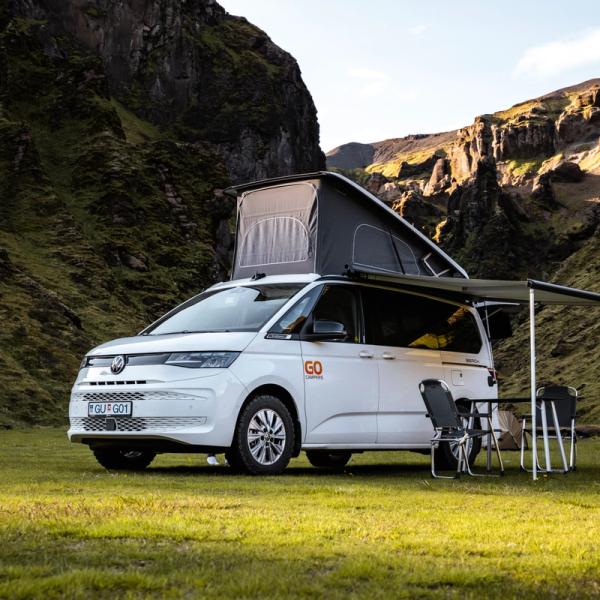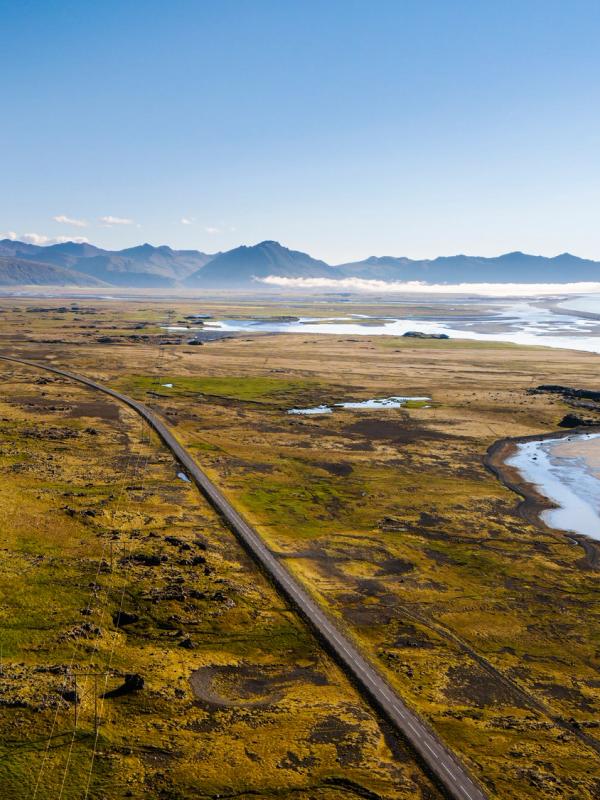
The Eastfjords: One of the less-visited and most fascinating regions in Iceland
Certain parts of Iceland have become increasingly popular travel destinations. The country is a collection of remarkable natural monuments that have drawn the attention of tourists from around the world. Some of them have become quite iconic and popular, while others remain almost hidden. But that doesn’t mean said places are not interesting. On the contrary, they are wonderful gems that are waiting for you to discover them.
In this category, we have to include the Eastfjords of Iceland, which stretch along the eastern edge of the island. They could be described as a rugged coastline dotted with deep inlets, steep mountains, and charming fishing villages. This region stands out for its serene atmosphere, where travelers can discover untouched landscapes without the crowds of more popular spots. It’s a fantastic location for a trip in a campervan. Here, you can feel a true connection with nature, making stops at sensational places.
From impressive waterfalls to ancient forests, the area blends natural beauty with a touch of local history. On top of that, the region has loads of campsites where you can park your vehicle for the night.
Key Takeaways
- The Eastfjords are part of East Iceland, or Austurland, one of the eight regions that make up Iceland.
- It’s an area with little population, who live mainly in the colorful villages on the coast.
- It’s a mountainous region, with several ski resorts.
The Eastfjords
East Iceland, also known as Austurland, is one of Iceland's eight official regions. Many people call the whole region the Eastfjords, as it’s its most significant feature. However, the fjords are just part of the coast of the region, from the village of Djúpivogur in the south to Borgarfjörður Eystri in the north. In this article, we’re going to talk about places in the region in general, not just by the shore, but that are quite close to the fjords themselves. This region covers about 22,000 square kilometers but has a population of only around 13,000 residents, making it one of the least populated and least visited parts of Iceland. The fjords themselves were shaped by glaciers thousands of years ago, creating a succession of narrow bays surrounded by peaks that rise sharply to over 1,000 meters (3,280 feet).
The landscape is quite diverse, from black-sand beaches and wild meadows to birch woodlands and high plateaus, with the Atlantic Ocean as a constant companion. The roads wind through this rugged landscape, and some routes are exceptionally beautiful, making it an outstanding region for a road trip.
What draws visitors here is the sense of isolation paired with accessibility. It's a place where you can drive for hours through empty vistas, stopping only for a herd of reindeer or a sudden waterfall.
Historically, the Eastfjords have been an active part of the country. In the 9th century, when the first settlers arrived, many made their homes in fishing villages here, as this is the part closest to Scandinavia, where they came from. And some of these towns still stand today. Villages like Seyðisfjörður and Eskifjörður became popular herring ports in the early 20th century, leaving behind colorful wooden houses and maritime museums that tell their story.
The region also has deep ties with the country’s folklore. For instance, the legends say that Lake Lagarfljót is home to Lagarfljótsormur, a creature said to lurk in its depths, much like Scotland's Loch Ness Monster. The first alleged sightings date back to the 14th century, adding a layer of mystery to the calm waters.
There are legends of elves and trolls, too, like in many other places in Iceland. The spectacular landscapes have sparked the imagination of different generations. Despite its remoteness and scarce population, the Eastfjords also have a vibrant cultural side, with artists displaying works in the towns, slow-life initiatives in Djúpivogur, and a growing appreciation for sustainable tourism. It's a region that feels timeless, offering campervan travelers a chance to connect with Iceland's quieter side.
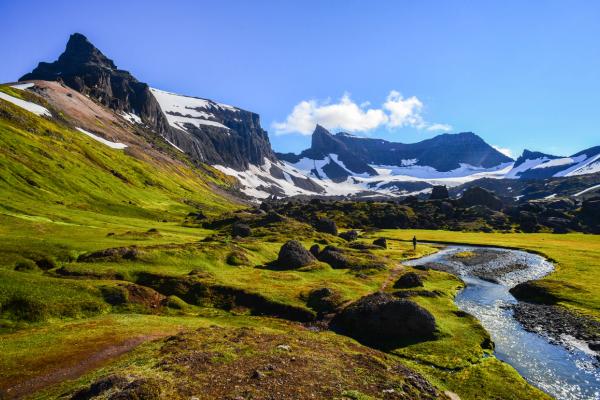
What to See in the Eastfjords
There’s a varied mix of different landscapes and ecosystems around the Eastfjords. There’s a lot to see here, and it’s all well-connected by road, making it a great place to create an itinerary for your campervan trip. If you have 3-4 days, you’ll be able to see most of it, but a couple of days should be enough to get a good glimpse of this part of the country.
Hengifoss and Litlanesfoss Waterfalls
A short drive from Egilsstaðir, the region’s capital, leads to the trailhead for Hengifoss, Iceland's third-tallest waterfall. It stands at 128 meters (420 feet) and is framed by basalt columns, creating a jaw-dropping scene. The 2.5-kilometer hike from the parking area takes about 45 minutes each way, winding through a lush valley. The hike to Hengifoss takes you past Litlanesfoss, another stunning waterfall framed by hexagonal basalt formations. The trek is moderately challenging but rewards you with breathtaking views.
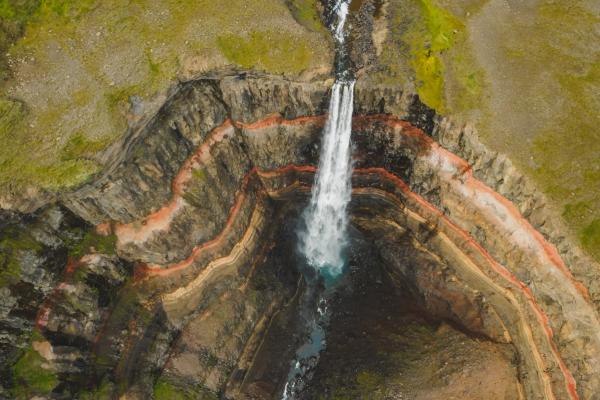
Seyðisfjörður
Although its name might sound complicated, Seyðisfjörður is one of the most charming towns in the Eastfjords. It has colorful wooden houses climbing the hills from the harbor. The iconic blue church stands out against the green slopes, and there are murals in many places created by local artists.
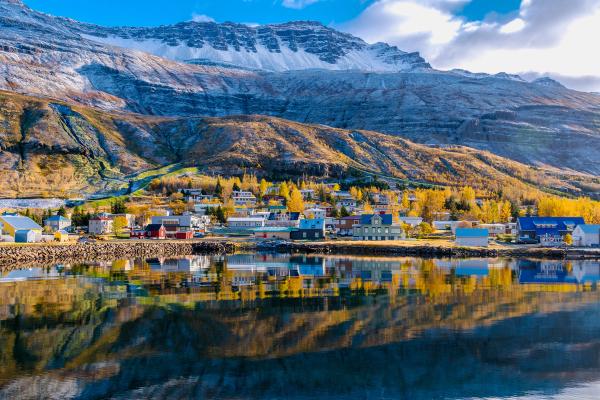
Fardagafoss
This waterfall is a little detour from the road between Egilsstaðir and Seyðisfjörður. From the road, you’ll have to walk 30 minutes (each way) to see Fardagafoss falling over a mossy cliff into a narrow canyon. It’s not the tallest waterfall, at 25 meters (82 feet) high, but it’s quite picturesque, and it’s a great stop to make if you pass by that road, which you most likely will. It’s a popular spot among the locals for a picnic, as the trail is quite easy.
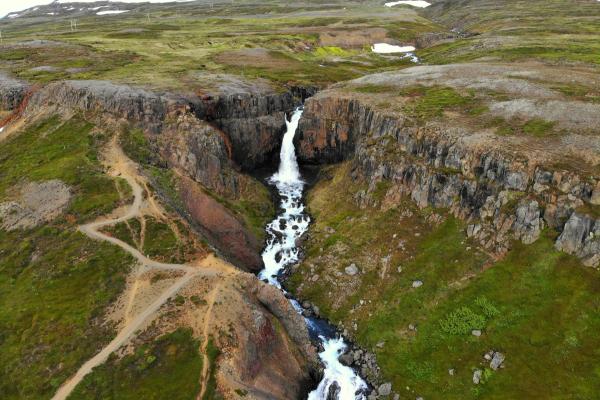
Lagarfljót
This long, narrow lake east of Egilsstaðir stretches 25 kilometers with depths reaching up 90 meters. It’s in a beautiful setting, with mountains on one side and a forest called Hallormsstaðaskógur on the other. It’s, by the way, Iceland’s largest forest. Apart from its astonishing beauty, this place is famous for the Lagarfljótsormur legend. It is said that a serpent-like creature lives in the depths of the lake’s calm waters, and many people, especially in the past, claimed to have seen it. While it’s quite unlikely to see the creature, it’s a gorgeous place, and there are several campsites quite near it.
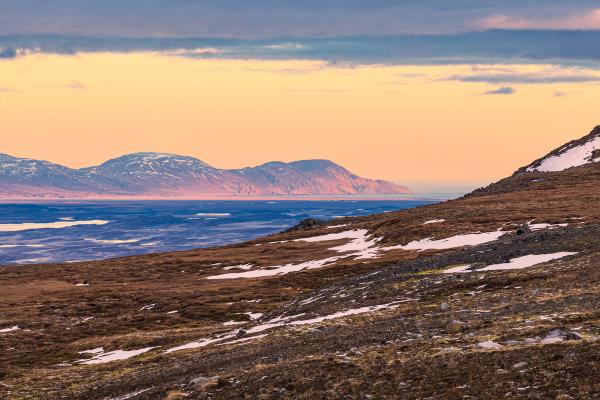
Hallormsstaðaskógur
If you plan to visit the lake, consider extending your stay a little longer and enjoy Hallormsstaðaskógur, which, as we mentioned earlier, is the largest forest in Iceland. It covers 740 hectares of birch, pine, and spruce along Lagarfljót's southern shore. Forests are not very common in Iceland, and this one started artificially, as a plan to fight erosion. There are several trails that go deep inside the forest. If you’re coming in autumn, you’re in for a treat, as the changing colors of the leaves create a mesmerizing spectacle. It’s a stone’s throw away from the Ring Road, so it’s quite easy to stop to see it.
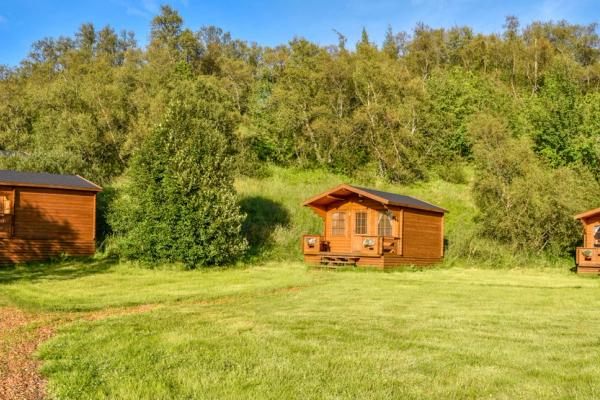
Vestrahorn
Just outside of Höfn, Vestrahorn is one of the most photographed mountains in Iceland. Take the road marked to Stokksnes to find a beautiful black sand beach with tufts of grass growing on it, and in the background, there are majestic mountains.
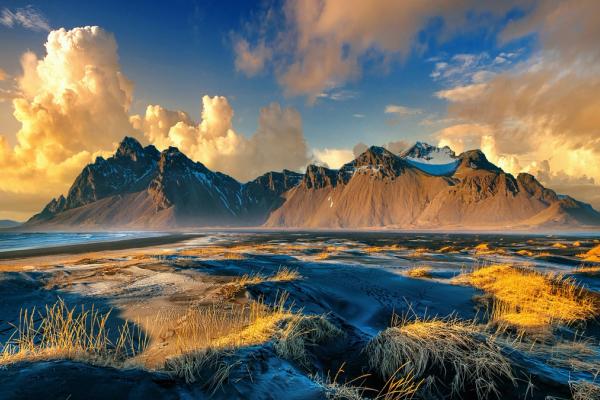
Papey Island
This small island off the coast near Djúpivogur is one of the best places in Iceland for bird watching, especially if you’re interested in puffins. Papey Island is accessible only by boat, which takes 30 minutes from Djúpivogur. It was once inhabited, but is not anymore. It still has an old lighthouse, a church (the smallest in Iceland), and the ruins of a farm. The best time to visit is in summer, when the birds—puffins, guillemots, and razorbills— come to the cliffs to nest. The views of the Eastfjords from the island are also fantastic.
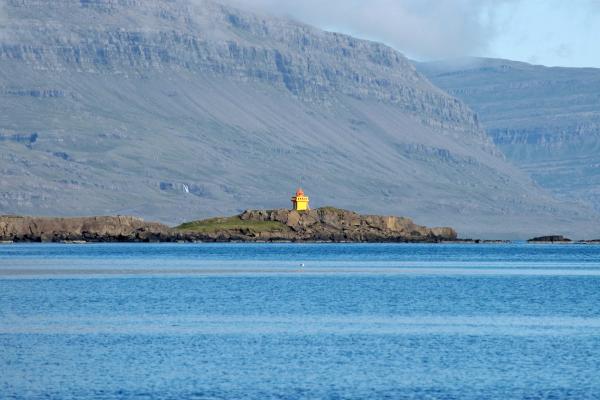
Borgarfjörður Eystri
Borgarfjörður Eystri is another spot where you can get up close and personal with Icelandic puffins. The viewing point is one of the best in Iceland, with an inside part to keep you warm on those extremely windy days.
For avid hikers, this is also one of the best spots to base yourself. Hiking over the peninsula into the abandoned bays to the east will provide you with some much-needed solitude, and there are multiple trails. For something more long-distance, you can attempt the 3-day hike all the way down to Seyðisfjörður.
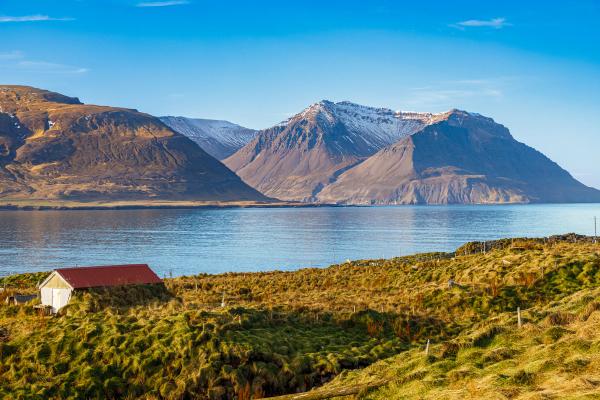
Vök Baths
No trip to Iceland is complete without a geothermal bath, and that’s something you can also do in the Eastfjords. The Vök Baths have infinity pools built directly on the surface of Lake Urriðavatn, creating an atmosphere that is difficult to find in other spas. The pools are naturally heated by nearby hot springs to 38-40°C (100 to 104°F). This way, you can enjoy a relaxing and cozy experience even if the air temperature is not so inviting. Open year-round, it's a peaceful soak with views of the lake and mountains. As this region is less visited than others, it’s not as popular as other geothermal spas of the country, like the Blue Lagoon or the Sky Lagoon, so you can unwind peacefully after a day exploring the region.
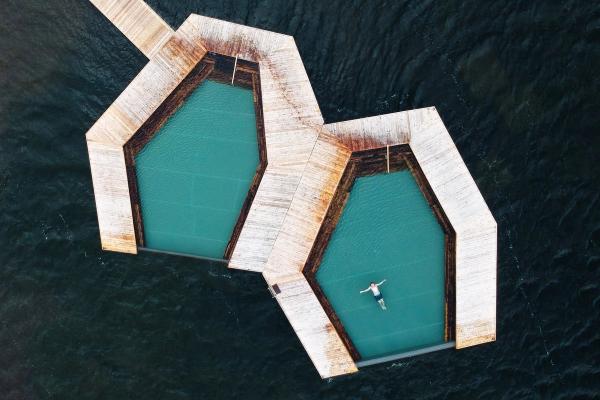
Djúpivogur
Located in the southernmost fjord of the region, Djúpivogur is a charming village known for its connection with the arts. It’s mainly known for a unique outdoor exhibition called "Eggin í Gleðivík”, by sculptor Sigurður Guðmundsson. It’s a series of giant granite eggs representing the different bird species in the area. There are also a few shops that sell wool and jewelry.
It’s the only city in Iceland that promotes the Slow Movement, an initiative that aims to improve the quality of life for its citizens by adopting a slower and more thoughtful approach to their daily lives. From its harbor departs the ferry to and from Papey Island.
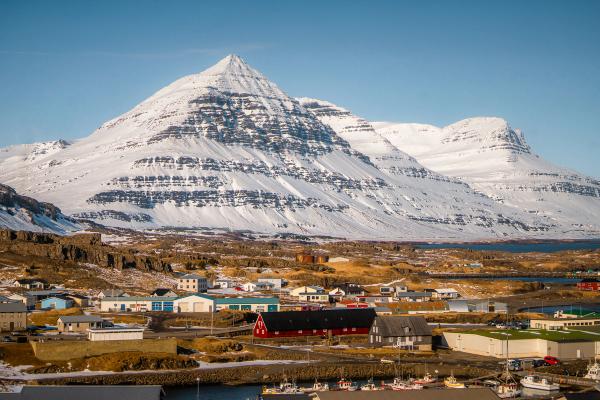
Petra's Stone Collection
In Stöðvarfjörður, you'll find one of the most unique exhibitions in all of Iceland. If you’re into geology, you’re going to love it. A local woman named Petra Sveinsdóttir collected over 2,000 rocks, minerals, and fossils from local beaches and mountains. Her house is now a museum, displaying quartz, ancient shells, and even a "troll's tooth," arranged with personal notes on each find. Petra passed away in 2012, but her spirit lives on in her collection.
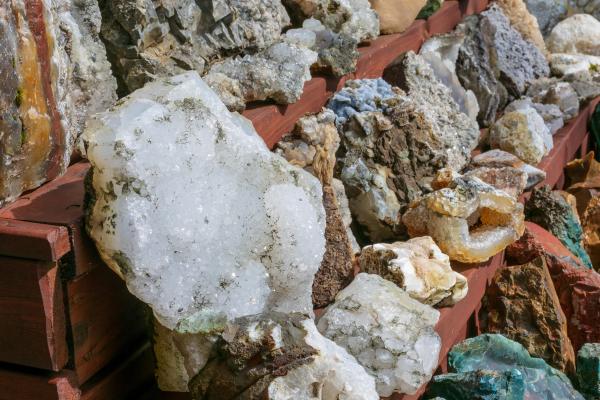
What to Do in the Eastfjords
Apart from the sights, the Eastfjords offer plenty of activities in the outdoors that combine perfectly with a campervan road trip.
Hiking
There are hundreds of trails in the Eastfjords, from the easy loops in Hallormsstaðaskógur to multi-day routes like the Víknaslóðir network, which takes hikers to remote fjords and abandoned farms. One of the most spectacular is Stórurð, an area known for its giant boulders, beautiful ponds and green valleys. Or you can head to Seyðisfjörður for a mix of culture and nature. You can expect a bit of every type of terrain in this region, from flat coastal walks to mountain climbs. Summer offers the best conditions: mild weather and around 20 hours of daylight.
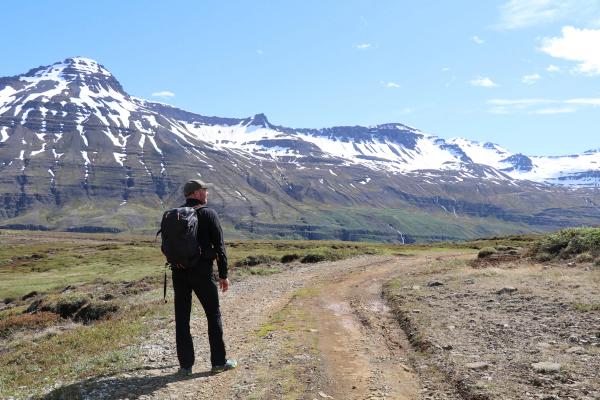
Winter Sports
Winters are complicated in Iceland. They are long and cold, the days are short, and travelling can be a bit tricky. On the other hand, it opens great opportunities for skiing and snowboarding, and the Eastfjords have great places for them. Close to the town of Eskifjörður we can find Oddsskarð, one of Iceland's best ski resorts, with good slopes, cross-country trails, and stunning views of the surrounding fjords. If you’re not into skiing, you can try snowshoeing in places like the Hallormsstaðaskógur forest.
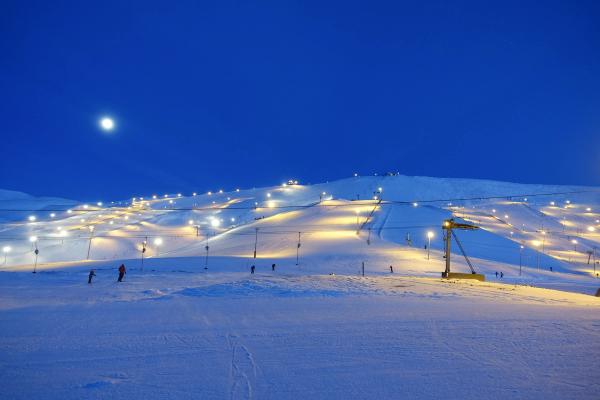
Spotting Wildlife
Many people come to Iceland in the hope of seeing some of the animals that live on the island. If that’s your case, the Eastfjords host three of the most sought-after of them all. In fact, East Iceland has the largest colony of reindeer in the whole country. These animals were introduced from Norway in the 18th century. Domesticated at first, they now roam freely close to the coast in the summer, but go back to higher areas in winter.
From May to August, the Eastfjords receive thousands of puffins. These funny-looking animals go to places like Borgarfjörður Eystri or Papey Island to nest. Bring binoculars to see them from a distance and not disturb them. The third one is seals, which can be seen sunbathing on rocks in the fjords. They are most active at dusk or dawn.
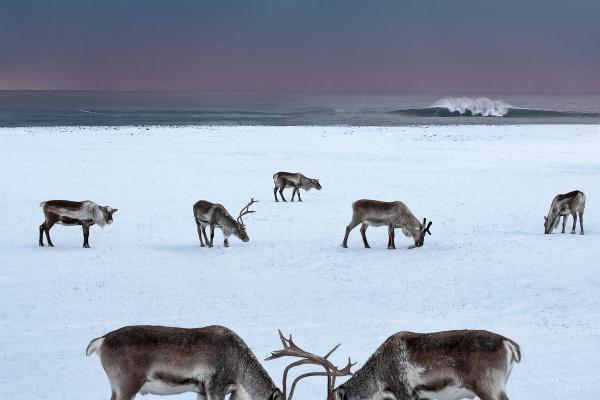
Where to Stay in the Eastfjords
If you are planning to stay for a few nights in the Eastfjords, you’ll be happy to know that there are plenty of places to stay with your campervan. Remember that wild camping is forbidden in all Iceland, so stick to designated areas. Here you have some great options in the region, but there are many more.
Fossardalur Campground
Open All year. Tucked in a valley, Fossardalur is a camping ground and a guesthouse. The camping area is quite big, with grassy pitches for tents and campervans. It has toilets, showers, electricity, free Wi-Fi, a washing machine and dryer, and a large building for cooking and dining.
Reyðarfjörður Camping Ground
Open from June 1 to August 31. Located just outside the town of the same name, by the shore of a beautiful pond, this site includes toilets, showers, electricity, a washing machine and dryer, and benches and tables. There is a gas station and a supermarket very close. If you don't feel like cooking, you can try local food in one of Reyðarfjörður’s restaurants. It’s quiet but close to services.
Hallormsstaður Camping Ground
Open from May 20 to September 30. If we talk about an amazing setting, this is the place. This camping ground is inside Hallormsstaðaskógur and by the shore of Lake Lagarfljót. This family-friendly site has toilets, showers, electricity, a BBQ area, outdoor tables, and a playground for children. Many of the trails that go into the forest depart from the camping ground. If you prefer, you can also stay in Hotel Hallormsstaður, a new hotel with 100 rooms and a restaurant.
Egilsstaðir Camping Ground
Open year-round. As the region's main town, Egilsstaðir had to have its own campsite. It has toilets, showers, free Wi-Fi, a washing machine and dryer, electricity, and a playground for children. It’s very close to supermarkets and other services, so it's a solid base for day trips.
Seyðisfjörður Camping Ground
Open from May 1 to September 30. Close to the center of Seyðisfjörður, this place has pitches divided into different zones. It has toilets, showers, electricity, a washing machine and dryer, free Wi-fi, a shared kitchen, and a dining area. They also have bikes for rent.
Hótel Framtíð
Open all year. Located in the heart of Djúpivogur, this place is a bit different and offers several options for accommodation. It has one hotel, with comfortable rooms; two hostels, with shared rooms and restrooms; apartment and cottages for rent; and lodging barrels, with capacity for three people. It’s close to the town’s harbor and supermarkets, so could be a good base for the south of the region.
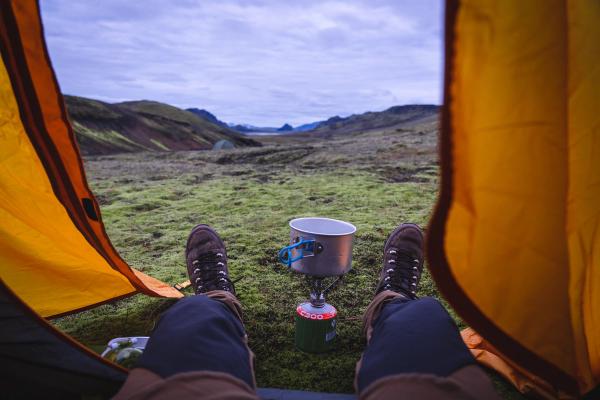
Where Are the Eastfjords and How to Get There
The Eastfjords lie along Iceland's eastern coast. It’s the far east of the country, but it’s quite accessible and easy to get to. The Ring Road (Route 1), the main road of Iceland, crosses the region from north to south. If you’re coming from Reykjavik, you just have to take the Ring Road heading east. It’s a long journey, about 670 kilometers (416 miles) to Egilsstaðir, the region’s capital, and it would take 8 to 9 hours without stops. But if you’re doing a road trip, you may want to make one or two stops in between and discover other parts.
The Ring Road is paved and generally in very good condition, as are the secondary roads in the region. Some of them are gravel, and you’ll have to drive carefully. From October to March, the weather can cause some road closures and disruptions, so check the road status every day to avoid major setbacks. It's important to know that there are not many gas stations and supermarkets outside the towns in Iceland, so plan your route to make convenient stops.
The Seasons in the Eastfjords
Spring (April and May) brings melting snow and vegetation coming to life after the long winter. The average temperature moves between 0 and 10°C (32-50°F). The roads are gradually clearing of snow, but there could still be some closures. Rain and wind are common, and the trails can be muddy and slippery. There are not many tourists, so you can enjoy the region almost to yourself.
Summer (June to August) is prime time. The weather is mild, with temperatures at 10-15°C (50-59°F), but the warmest day can see up to 20°C (68°F). The days are really long, with almost no night at the end of June, giving you plenty of time to explore every corner of the region. At this time, the puffins come to the fjords to nest. Although the weather is more or less stable, rain can show up all of a sudden, or the temperature can drop significantly in a matter of minutes.
In Autumn (September and October), the forests get a golden and red color, making them look amazing. The temperature gradually drops, moving around 0-8°C (32-46°F), and the days get shorter every week. Rain chances increase and the wind picks up. On the other hand, it’s the season when, if the night is clear, the Northern Lights can be seen.
Winter (November to March) is a bit of a ying and yang situation. The weather is a bit harsh, with temperatures around -5 to 5°C (23-41°F) and short days. Everything is covered in snow, and travelling can be tricky. That being said, the landscapes look astonishing under the snow, and it’s the time to go skiing and snowboarding.
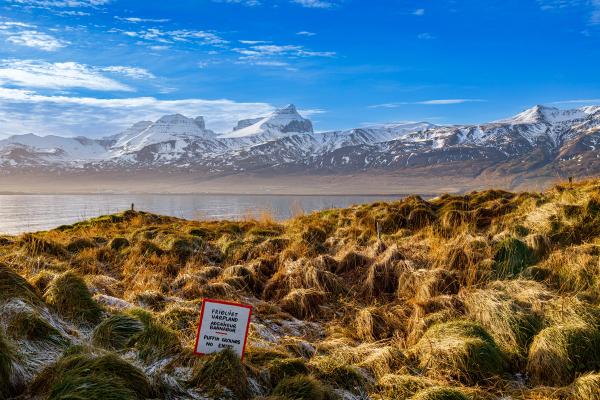
Travel Tips
- Take it easy on the narrow fjord roads and yield to let oncoming cars pass.
- Keep an eye on the forecast for weather updates, since storms can pop up and close roads fast.
- Grab groceries at bigger spots like Bonus in Egilsstaðir and other towns. Smaller shops are usually more expensive.
- Stick to marked paths to protect the environment.
- Rent a 4x4 campervan if you want to explore those tempting gravel side roads or are coming in winter.
- Fill up the tank whenever you can—gas stations are few and far between.
- Let someone know your hiking plans, as remote trails can be far from help if things go wrong.
- Slow down and soak in the Eastfjords’ peaceful vibes—it’s worth savoring every moment.
Conclusion
Some places are absolute jewels that not many people visit or even hear of. That’s the case of the Eastfjords, one of the most overlooked regions in Iceland. But doing a road trip through this part of Iceland can be one of the best travelling experiences of your life. With the proper preparation, you can enjoy an adventure like no other.

